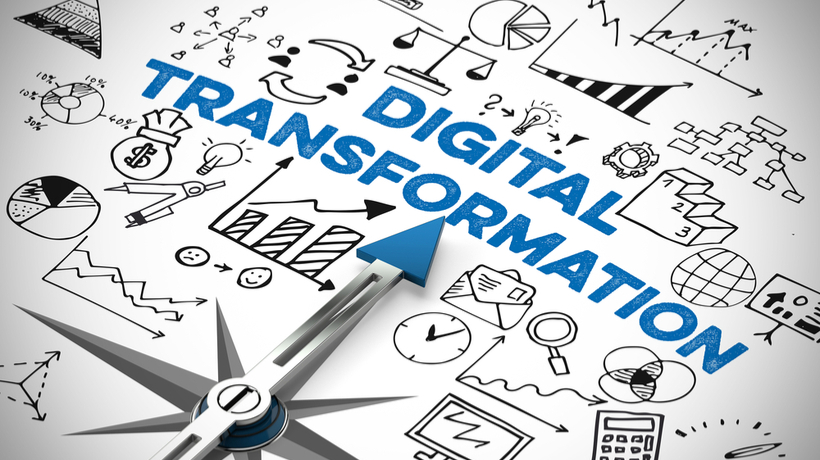Data Migration And Digital Transformation For Businesses And L&D Pros
In today's rapidly evolving digital landscape, businesses from different industries are starting to use digital transformation more to stay competitive and meet the needs of today's customers. At the heart of this transformation lies the critical process of data migration. Data migration means moving data from one place to another, like from one computer to another or from a computer to a cloud storage system. In this article, we'll delve into the pivotal role that data migration plays as the backbone of digital transformation. Businesses can navigate this process effectively to drive successful digital initiatives by understanding the importance of data migration and its challenges.
Understanding Data Migration
Data migration is transferring data from one location, format, or system to another. It's vital to digital transformation, enabling businesses to modernize their data infrastructure and adapt to changing technological landscapes. Data migration involves:
- Extracting data from its current source.
- Transforming it into a compatible format.
- Loading it into a new target destination.
This process is vital for ensuring the continuity of business operations, enabling seamless access to critical information, and facilitating decision making in an increasingly data-driven environment. Effective data migration requires careful planning, precise execution, and thorough validation to mitigate risks and ensure the integrity and accuracy of the migrated data. By understanding the intricacies of data migration, businesses can leverage this process as a critical factor in sparking innovation and reaching their digital transformation objectives.
The Need For Data Migration In Digital Transformation For L&D And Beyond
It has become imperative for businesses to adapt to the fast-paced, technology-driven market landscape. At the core of this transformation lies the need to leverage data effectively. However, many organizations struggle with outdated or incompatible data systems that hinder their ability to innovate and compete. This is where data migration plays a pivotal role.
Data migration is essential in digital transformation because it allows businesses to modernize and align their data infrastructure with their evolving needs. Companies can tap into the complete power of their data assets by migrating data to modern, agile platforms. This enables them to streamline processes, gain actionable insights, and enhance decision-making capabilities.
Furthermore, data migration ensures data consistency and integrity across systems. Having accurate and up-to-date information is paramount in a digital ecosystem where data drives operations and decision-making. Data migration enables businesses to consolidate disparate data sources, eliminate redundancy, and ensure data quality, laying a solid foundation for successful digital transformation initiatives.
Challenges Of Data Migration
Navigating the landscape of data migration can present significant hurdles for businesses. Overcoming these challenges ensures a seamless transition to modern data systems.
- Data loss or corruption
Inaccurate data mapping and technical errors can lead to data loss or corruption during migration, impacting the integrity of the information. - Downtime disruption
Temporary system downtime during migration can disrupt business operations, affecting productivity and customer service. - Compatibility issues
Incompatibility between old and new systems can arise due to outdated technology or proprietary formats, necessitating data conversion and adding complexity to the process. - Data security and compliance
Ensuring data security and compliance with regulations like GDPR or HIPAA throughout migration is crucial to protect sensitive information from unauthorized access or breaches. - Infrastructure challenges
Adequate infrastructure is necessary to support the migration process, including sufficient storage capacity, bandwidth, and computing resources.
Addressing these challenges requires meticulous planning, robust infrastructure, and expertise in data management. Businesses can mitigate risks and achieve successful data migration outcomes by implementing effective strategies.
Strategies For Successful Data Migration
To overcome the challenges of data migration and ensure a smooth transition, organizations can implement several strategies:
1. Thorough Planning
First, assess your existing data setup and identify data sources, formats, and dependencies. Develop a detailed migration plan that outlines resources, timelines, and objectives required for each phase of the migration process.
2. Data Quality Assessment
Before migrating data, assess its quality to identify inconsistencies, duplicates, or errors. Implement data cleansing techniques to improve data accuracy and integrity, ensuring that only high-quality data is migrated to the new system.
3. Testing And Validation
Perform extensive testing and validation of the migration process to detect and resolve any possible problems or errors. Create test environments to simulate migration and verify data integrity, functionality, and performance.
4. Incremental Migration
Consider adopting an incremental migration approach, where data is migrated in stages rather than all at once. This allows you to minimize downtime, mitigate risks, and validate each stage of the migration process before proceeding to the next.
5. Stakeholder Engagement
Involve key stakeholders from across the organization in the data migration process. Collaborate closely with IT teams, business users, and third-party vendors to ensure alignment of goals, address concerns, and facilitate communication throughout the migration project.
6. Continuous Monitoring And Optimization
Implement monitoring tools and processes to track the progress of the migration and detect any issues in real time. Continuously optimize the migration process based on feedback and lessons learned, making adjustments to ensure a successful outcome.
By implementing these strategies, organizations can enhance the effectiveness and efficiency of their data migration efforts, minimizing risks and maximizing the benefits of digital transformation.
Final Words
Data migration is the backbone of digital transformation, enabling organizations to modernize their data infrastructure and unlock the full potential of their data assets. Despite its challenges, successful data migration is essential for organizations to remain competitive and drive innovation in today's digital age. Businesses can overcome obstacles and achieve seamless data migration by adopting strategic planning, thorough testing, and stakeholder engagement. Embracing data migration as a critical component of digital transformation will empower organizations to harness the power of data and thrive in an increasingly data-driven world.








